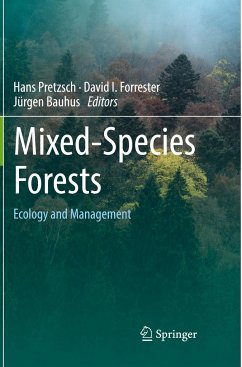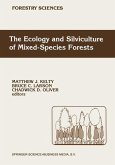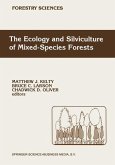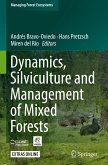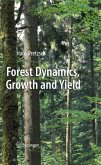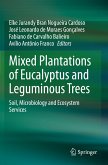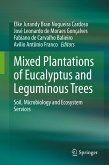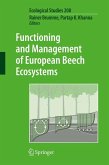This textbook offers a detailed overview of the current state of knowledge concerning the ecology and management of compositionally and structurally diverse forests. It provides answers to central questions such as:
What are the scientific concepts used to assess the growth, dynamics and functioning of mixed-species forests, how generalizable are they, and what kind of experiments are necessary to develop them further? How do mixed-species stands compare with monocultures in relation to productivity, wood quality, and ecological stability in the face of stress and disturbances? How are the effects of species mixtures on ecosystem functioning influenced by the particular species composition, site conditions, and stand structure? How does any over- or underyielding at the forest-stand level emerge from the tree and organ level, and what are the main mechanisms behind mixing effects? Howcan our current scientific understanding of mixed-species forests be integrated into silvicultural concepts as well as practical forest management and planning? Do the ecological characteristics of mixed-species stands also translate into economic differences between mixtures and monocultures?
In addition, the book addresses experimental designs and analytical approaches to study mixed-species forests and provides extensive empirical information, general concepts, models, and management approaches for mixed-species forests. As such, it offers a valuable resource for students, scientists and educators, as well as professional forest planners, managers, and consultants.
What are the scientific concepts used to assess the growth, dynamics and functioning of mixed-species forests, how generalizable are they, and what kind of experiments are necessary to develop them further? How do mixed-species stands compare with monocultures in relation to productivity, wood quality, and ecological stability in the face of stress and disturbances? How are the effects of species mixtures on ecosystem functioning influenced by the particular species composition, site conditions, and stand structure? How does any over- or underyielding at the forest-stand level emerge from the tree and organ level, and what are the main mechanisms behind mixing effects? Howcan our current scientific understanding of mixed-species forests be integrated into silvicultural concepts as well as practical forest management and planning? Do the ecological characteristics of mixed-species stands also translate into economic differences between mixtures and monocultures?
In addition, the book addresses experimental designs and analytical approaches to study mixed-species forests and provides extensive empirical information, general concepts, models, and management approaches for mixed-species forests. As such, it offers a valuable resource for students, scientists and educators, as well as professional forest planners, managers, and consultants.
"Straightforward illustrations and infographics are an added advantage of the book, and the writing style needs special appreciation, let it be the abstracts or the take-home messages at the end of the chapters. This book must be recommended in the curriculum for forestry and natural resource management and is highly useful for students as well as researchers." (S. Suresh Ramanan, Basic and Applied Ecology, Vol. 35, 2019)

